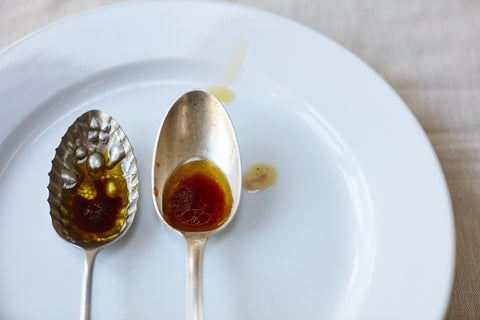Vinegar in a nutshell

There are many types of vinegar, we all add malt vinegar to our ubiquitous fish and chips but how many of us use vinegar on a regular basis in the kitchen? In recent years, people have been discovering that good quality wine vinegars, aged in barrels, can elevate recipes to a whole new level. For example, adding a few splashes of a pinot noir vinegar to a slow cooked daube finishes it off perfectly.
The word vinegar comes from the French vinaigre (‘sour wine’). Wine turns to vinegar when it is exposed to the air and the alcohol in the wine reacts with a bacteria to produce acetic acid. The bacteria grown on the surface of the vinegar creates a thick skin, known as a ‘vinegar mother’ which can be used as a starter for a new batch when making vinegar in barrels or crocks.
Vinegar can also be made from other types of alcohol, such as Asian style rice vinegars, Italian beer, Normandy cider, and Spanish sherry. Balsamic (aceto balsamico), one of the most popular vinegars uses a combination of boiled grape must (mosto) and wine, to make a sticky, sweet and intense vinegar aged in different wood barrels, the best for a minimum of 15-20 years and the rarest sometimes for over a hundred years.
Vinegar really is indispensable in the kitchen. Centuries ago it was widely used for preserving meats, fish, fruits and vegetables, saving people from famines through harsh winter months, and it is still one of the main preservatives in pickles and chutneys today.
The ancient Greeks and Romans drank vinegar diluted with honey and water and it was an essential part of the marching rations for Roman soldiers to give them strength before battle. Medicinally they also recognised the important role it had to play treating stomach problems, arthritis, ulcers, kidney stones and headaches to name jut a few ailments. It’s also perfect for easing bee and jellyfish stings. Around the house, it has myriad cleaning roles useful as a disinfectant and cheaper alternative to modern cleaning products.
In the kitchen, it is also invaluable as a versatile flavouring in its own right and it turns up in some of the world’s most exciting recipes – throughout Europe to the Far East and all over the America’s. Check our recipe section on the site for recipes that we’ll be adding on a regular basis.

